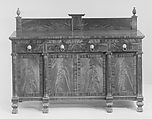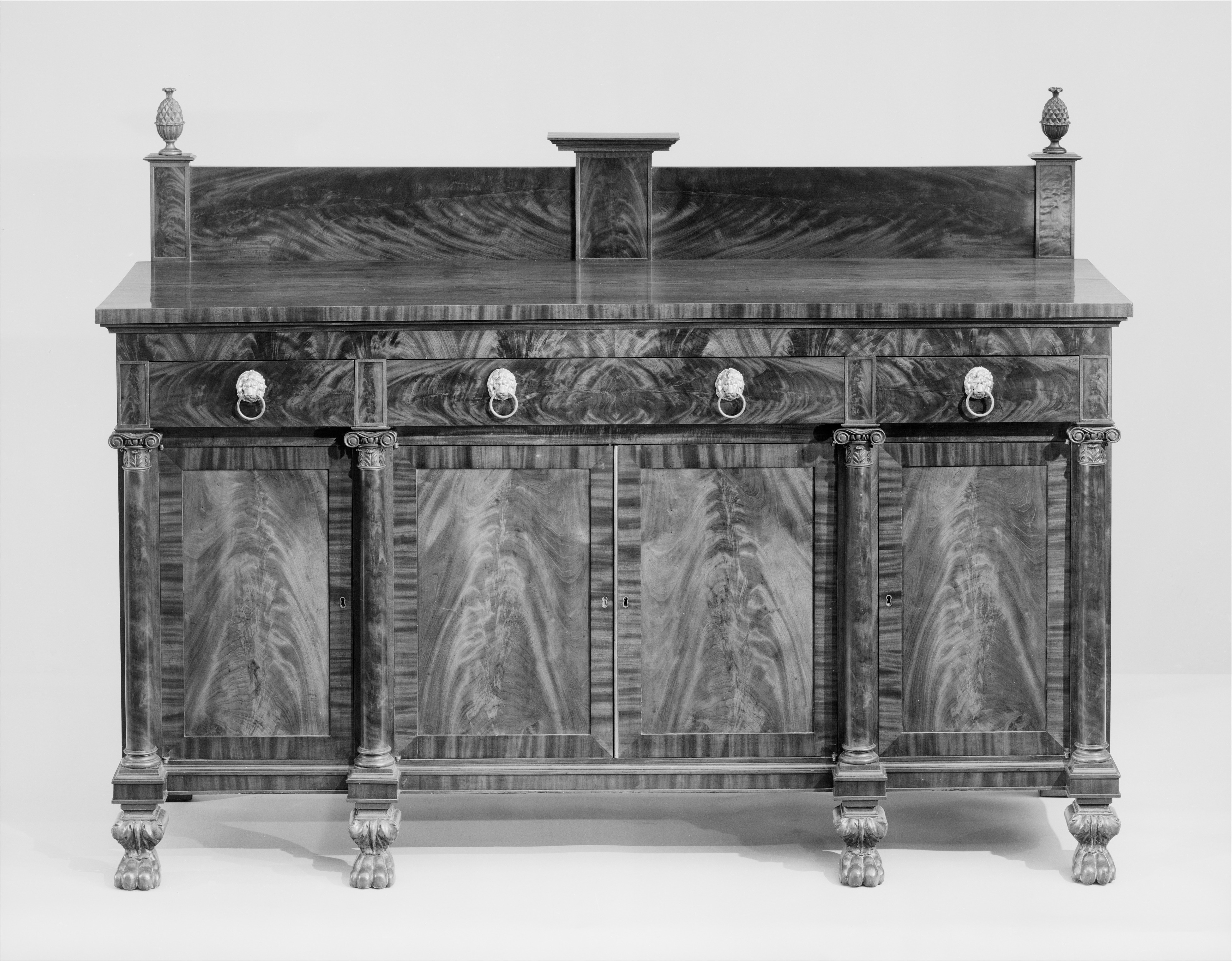Sideboard Table
Charles-Honoré Lannuier American
Flame-grain mahogany veneers contrast with straight-grain mahogany crossbanding to enliven the facade of this massive architectural sideboard from the shop of the Parisian émigré cabinetmaker Charles-Honoré Lannuier. The "French" sideboard, first made in the United States around 1810, became the predominant dining room storage and display furniture form in American homes in the first half of the nineteenth century. The sideboard's name derives from its close relationship to the French Empire desserte, a similarly massive form with four cupboard doors, a frieze of drawers, and columns terminating in lion's-paw feet.
Due to rights restrictions, this image cannot be enlarged, viewed at full screen, or downloaded.
This artwork is meant to be viewed from right to left. Scroll left to view more.



